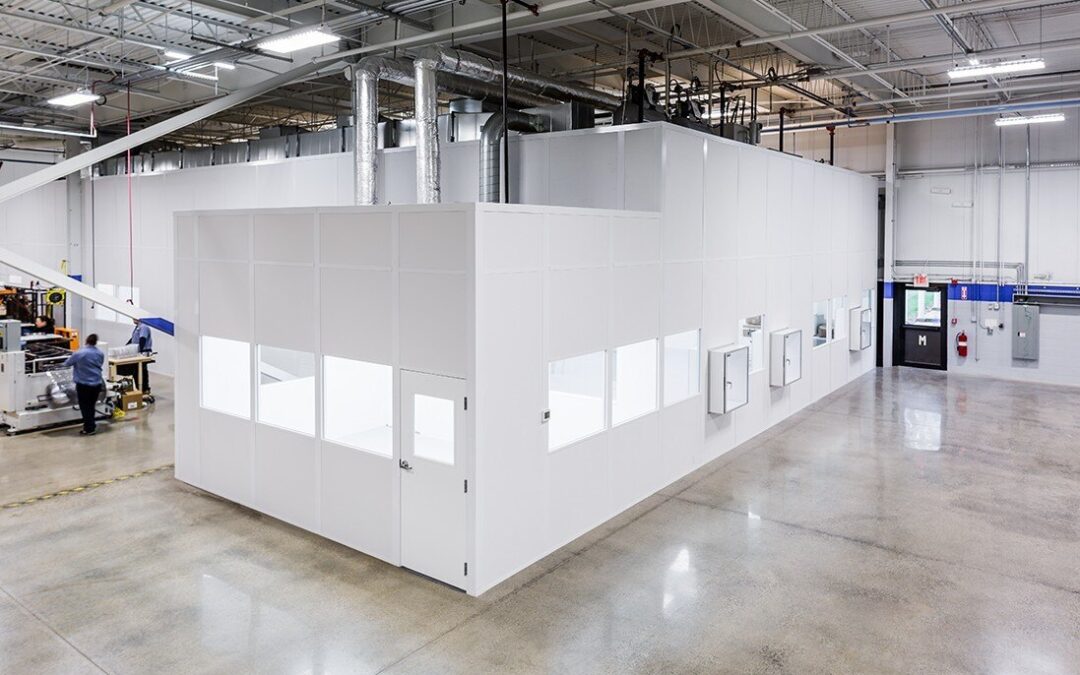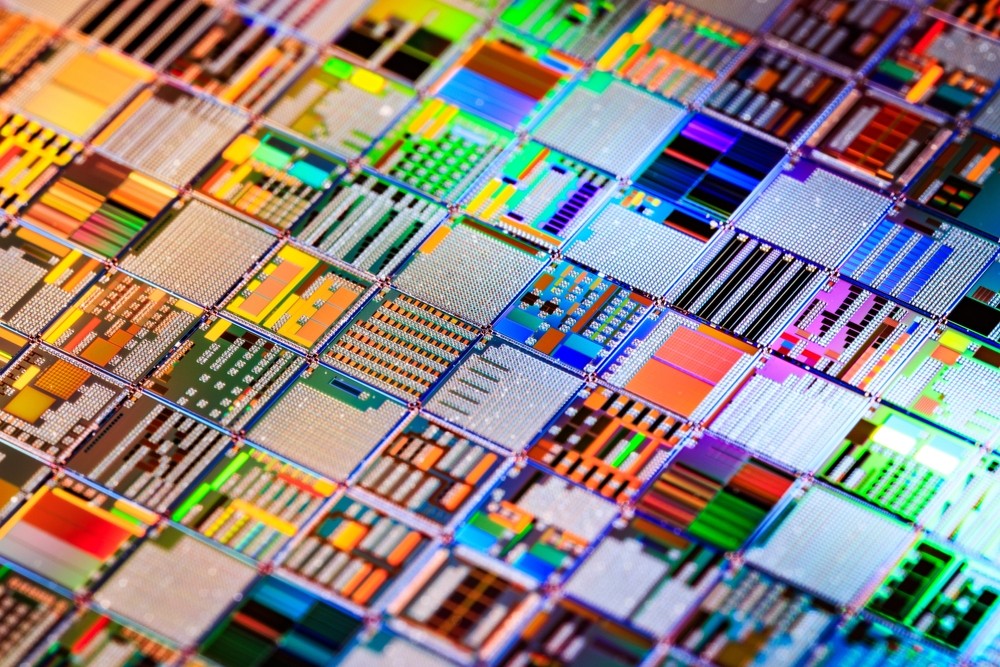
The 4 Main Types of Cleanrooms: Features, Benefits, and Best Uses
From pharmaceutical research to electronics manufacturing, cleanrooms make it possible to meet strict quality and safety standards that ordinary spaces simply can’t achieve.
But not every cleanroom is the same. Choosing the right type of cleanroom for your application is essential to balancing compliance requirements, budget, and long-term flexibility.
Today, most facilities rely on one of four main types of cleanrooms:
Hardwall, Softwall, Rigidwall, and Seamless cleanrooms.
Each offers unique advantages depending on your industry and classification needs. Let’s dive in.
The 4 Types of Cleanrooms
1. Hardwall Cleanrooms
Modular Hardwall cleanrooms are built using modular panels supported by a durable aluminum frame. These panels create solid, permanent walls that form a highly controlled environment.
Key benefits of a modular hardwall cleanroom:
- Achieve the highest levels of environmental control, meeting ISO Class 5-8 requirements.
- Dedicated controlled environment, designed with a standalone HVAC system or utilizing host building environmental conditions.
- Support additional controls such as pressurization, static, and humidity management for sensitive applications.
- Modular design enables reconfiguration, relocation, or expansion without compromising durability.
Best use cases of a hardwall cleanroom:
Hardwall cleanrooms are an excellent choice for industries that demand stringent compliance and absolute control, including:
- Medical and pharmaceutical research and manufacturing
- Aerospace engineering and testing
- Semiconductor and electronics production
2. Softwall Cleanrooms
Softwall cleanrooms are constructed with an aluminum or steel frame and flexible vinyl curtain walls. This minimalist design makes them lightweight and adaptable to almost any facility layout.
Key benefits of a softwall cleanroom:
- Affordable and lightweight, making them one of the most cost-effective cleanroom solutions.
- Compact footprint allows for installation in tight spaces—or even within another cleanroom.
- A variety of curtain materials are available, including standard clear vinyl, anti-static, ESD, amber, and black.
- Highly flexible and expandable, making it easy to scale up as operations grow.
- Capable of meeting ISO Classes 5–8 with proper filtration and configuration.
Best use cases for a softwall cleanroom:
Softwall cleanrooms are a practical choice for industries that need a balance of performance and affordability, such as:
- Plastics manufacturing
- Automotive applications
- Indoor agriculture and grow rooms
- Certain medical and biotech operations
3. Rigidwall Cleanrooms
Rigidwall cleanrooms feature durable, transparent panels made from acrylic, static-dissipative PVC, or polycarbonate. These transparent walls provide strength comparable to Hardwall systems, with the added benefit of visibility.
Key benefits of a rigidwall cleanroom:
- Sleek, attractive design with floor-to-ceiling transparency, allowing for easy monitoring.
- Durable and easy to maintain, with panels that hold their integrity over time.
- Suitable for ISO Class 5–8 environments.
- Customizable in height and often pre-wired for lighting and equipment controls.
Best use cases for a rigidwall cleanroom:
Rigidwall cleanrooms are ideal when durability and aesthetics both matter, including:
- Medical device packaging
- Automotive and aerospace applications
- Plastics manufacturing
4. Seamless Cleanrooms
Seamless cleanrooms, or flush-surface cleanrooms, are constructed with continuous wall and ceiling systems. Their cold-welded seams create a smooth, continuous surface that eliminates gaps where particles could collect.
Key benefits of a seamless cleanroom:
- Easy to sanitize and maintain, with flush surfaces that reduce contamination risks.
- Suitable for USP 797/800 compounding, as well as cGMP pharmaceutical manufacturing, where the highest ISO and EU GMP standards apply.
- Offer excellent control of contamination and environmental conditions.
- Provide a permanent, long-term solution for high-risk applications.
Best use cases for a seamless cleanroom:
Seamless cleanrooms are the preferred choice for industries where sterility and regulatory compliance are critical, such as:
- Pharmaceutical compounding
- Biotechnology
- Life sciences research and manufacturing
- Healthcare and hospital cleanrooms
Choosing the Right Cleanroom for Your Application
Each cleanroom type offers unique advantages, so the right choice depends on your industry, compliance requirements, and budget.
Factors to consider:
- Industry standards & compliance (ISO classifications, USP guidelines).
- Budget & scalability needs.
- Environmental controls (temperature, humidity, pressure, static).
- Timeline (fast modular installs vs. permanent stick-built).
Cleanroom Type Comparison Table
Here’s a side-by-side comparison to help you decide:
Frequently Asked Questions About Cleanroom Types
Q. What are the four types of cleanrooms?
A. The four main cleanroom types are Hardwall, Softwall, Rigidwall, and Seamless cleanrooms. Depending on the application, each offers different levels of environmental control, cost, and flexibility.
Q. Which type of cleanroom is best for pharmaceuticals?
A. For sterile drug compounding, modular hardwall cleanrooms have been widely acceptable for USP 797 and 800. However, seamless wall panels are being more widely adopted because their smooth, continuous surfaces support compliance with these standards.
This preference for seamless wall panel systems mirrors pharmaceutical research and manufacturing, since they can be designed to meet ISO and GMP requirements.
Q. What is the most affordable type of cleanroom?
A. Softwall cleanrooms are the most cost-effective option. They’re lightweight, easy to install, and flexible enough to expand as your operations grow.
Q. Are modular cleanrooms FDA and ISO compliant?
A. Modular cleanrooms, including Hardwall, Softwall, and Rigidwall designs, can be built to meet FDA and cGMP regulatory requirements and to achieve specific ISO classifications for particle control.
- FDA/cGMP regulations govern the overall design, operation, and maintenance of cleanrooms to ensure product safety and quality.
- ISO standards define the allowable levels of airborne particles and are one component of regulatory compliance, but not equivalent to it.
Q. Can cleanrooms be expanded in the future?
A. Absolutely. Hardwall, Rigidwall, and Softwall cleanrooms are especially easy to expand or reconfigure. Seamless cleanrooms are more permanent but can be planned with future expansion in mind.
Ready to Build the Right Cleanroom for Your Facility?
Choosing between Hardwall, Softwall, Rigidwall, and Seamless cleanrooms comes down to your industry standards, compliance needs, and long-term goals. Each type offers unique benefits, but no matter which you choose, the right design and installation partner makes all the difference.
At Angstrom Technology, our experts have decades of experience designing and building cleanrooms for various industries, including pharmaceuticals, biotech, aerospace, medical devices, and more.
We’ll work with you to determine the best fit for your application and ensure your cleanroom meets even the most stringent requirements.
Ready to get started? Contact Angstrom Technology today to talk with our cleanroom experts.















